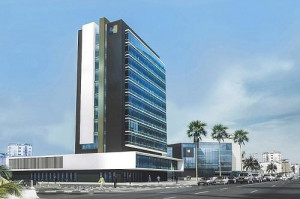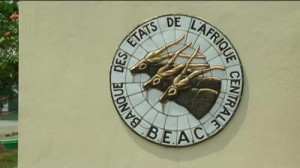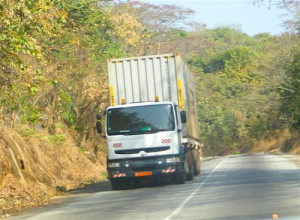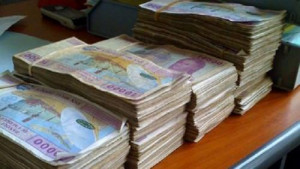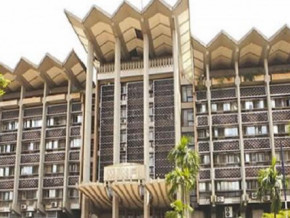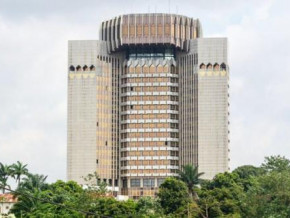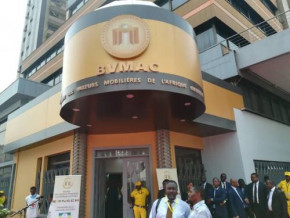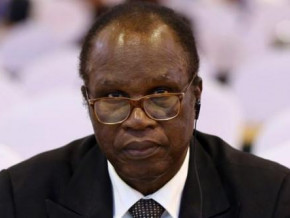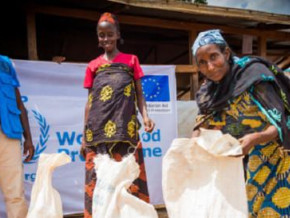
Beac seeks partner for pension fund audit
The Bank of Central African Countries (Beac), the issuing institution of the Six Cemac States, has just launched an international tender to hire a specialized firm for an actuarial audit of its pension fund. This was revealed in a recent Beac communiqué.
Bids must be submitted to the Beac central services in Yaoundé, the capital of Cameroon, no later than March 7, 2019 at 12pm. A subscription fee amounting to XAF100,000 is required and should be paid in cash via Beac desk or banking transfer.
BRM
Cemac: Total balance sheet of financial institutions reached XAF471 billion in Q3 2018, up 1.6 year-on-year
The Cemac central bank Beac reports that during the third quarter of 2018, the total balance sheet of financial institutions operating within the region peaked at XAF471 billion, up XAF7.2 billion (+1.6%) compared to the same period in 2017. Figures cover the 9 banking institutions in the Cemac financial system, 7 of them being in Cameroon and 2 in Gabon.
The uptick, Beac says, is the combined result of a decline in gross loans from XAF29 billion (-8.9%) to XAF288.6 billion, an increase by XAF7.2 billion (+17.7%) in customer deposits particularly unallocated deposits, a deterioration in quality portfolio added to a decrease by XAF3.6 billion (-2.3%) in outstanding receivables.
The increase in the cash surplus was XAF45.4 billion (+40.8%), due to a decrease in loans and an increase in deposits. Beac also notes an increase in the surplus of permanent capital (+2.94%), following a strong increase in the level of equity capital.
S.A
Cemac: Total bank balance sheet peaked at XAF12.872bln in late September 2018, up 1.5% year-on-year
At the end of September 2018, the total balance sheet of banks operating within the Cemac area peaked at XAF12.872 billion, an increase by 1.5% (+XAF194.9 billion) compared to the same period in 2017. Figures were provided by the Central Bank Beac in a recent report.
In details, net loans to deposit ratio reached 125.2% against 121.4% previously. Transactions with customers provided a surplus of resources of XAF1,920 billion against XAF1,631 billion at the end of September 2017 while the cash flow surplus was XAF2,526 billion (19.9% of the total balance sheet), up 17.5% (+XAF376 billion) compared to September 2017.
Beac reports that the higher cash flow surplus is the result of a strong augmentation in deposits, added to a below-average increase in loans granted between the two periods.
Further, the bank notes an increase in the permanent capital surplus by XAF67.7 billion (+18.1%) spurred by the strengthening of equity carried out mainly during the delivery of results during the 2017 financial year.
S.A
Beac further tightens access-to-finance conditions in the Cemac zone
Following its latest monetary policy committee held December 18 in Yaoundé, the Bank of Central African Countries (Beac) announced it is further tightening conditions for access to financing within the Cemac area.
This said, the bank increased the rate on the marginal lending facility by 75 basis points, from 5.25% to 6%, while the penalty rate for banks grew to 8.30% from 7.55%. Only the interest rate for bids (TIAO) was maintained, after an increase by 55 basis points last October 31. On that date, Beac had already increased key interest rates. The TIAO rose to 3.50% from 2.95%, penalty rate for banks from 7% to 7.55% while the rate on the marginal lending facility grew from 4.7% to 5.25%.
A reason for these repeated rate hikes over the last 3 months, according to Governor Abbas Mahamat Tolli, is Beac’s ambition to develop interbank loans, rather than encouraging credit institutions to use the central bank’s discount window to obtain refinancing. Another reason is to curb capital flight; a move that helped replenish struggling foreign exchange reserves; the Cemac zone being a major importer of almost all current consumer products. “When XAF100 is injected into the Cemac zone, almost XAF90 is spent abroad, because we import a lot,” explained a Beac official.
However, finance experts rather see the interest rate hike as a barrier to the financing of the sub-region’s economies. They say because of this measure, it’s now going to be tougher for companies to access bank loans in the coming months which could slow activities.
Let’s recall that the volume of new credits granted in H1 2018 within the Cemac region dropped by 11.91% to XAF4,500.2 bln compared to the same period in 2017 (XAF5,108.71 bln), according to Beac statistics.
Brice R. Mbodiam
Cemac: non-oil growth to accelerate to 4.5% by 2021 from 1% in 2018 (IMF)
The Executive Board of the International Monetary Fund (IMF) concluded December 17 in Washigton, USA, annual talks with the Central African Economic and Monetary Community (Cemac) that includes Cameroon, Central African Republic, Congo, Gabon, Equatorial Guinea and Chad.
Talk outcomes showed that in the mid-term, the sub-region’s economic and financial context will improve gradually. “Reforms to improve the business environment and governance, as well as strengthen the financial sector, added to a loosening of the curb in fiscal adjustment and the repayment of government arrears, would contribute to the gradual recovery of non-oil growth to 4.5% by 2021,” IMF said. This outlook is on the rise given that the body forecasts Cemac’s non-oil growth to drop to 1.0% this year against 2.6% in 2017.
Moreover, the overall budget balance (grants excluded) would be close to balance as of 2019, driven by a further reduction in non-oil primary deficit. IMF sees public debt to significantly decline from nearly 50% of GDP at the end of 2018 to less than 44% of GDP by the end of 2020. Also, a further decline in the current account deficit to around 1.5% of GDP in 2018-20 (from 4% of GDP in 2017) would contribute to a gradual accumulation of reserves, with reserve coverage reaching almost four months of imports by 2020.
Yet, IMF points out, the prospects are based on the full implementation by CEMAC member countries and regional institutions of their economic policy and reform commitments to restore the region's external stability.
S.A
Cameroon provided 75% of loans granted in Cemac zone, in H1 2018
Over the first six months this year, banks operating in Cameroon granted loans worth XAF3,372.1 billion, representing 75% of the XAF4,500.2 billion granted as loans within the Cemac zone the same period. This weight of Cameroon in Cemac loans in H1 2018 is 4% higher than the share the same period last year.
According to Cemac’s central bank Beac, Gabon came second behind Cameroon, providing XAF646.85 billion, or 14% of total amount of loans; ahead of Congo (4%), Equatorial Guinea (3%), Chad (3%) and Central African Republic (1%). Cameroon and Gabon alone, Beac says, granted 89.31% of the amount.
“With regards to type of beneficiaries, large companies and SMEs captured respectively 73.62% and 14.54% of loans. As for individuals they received just 4.52% of the aggregate loan amount,” detailed Beac.
BRM
CEMAC : loans declined 11.9% year-on-year, in end-June 2018, amid outstanding receivables explosion
Volume of loans granted by Banks within the Cemac region dropped by 11.9% between June 2017 and June 2018, the central bank Beac indicated in its latest report.
“The data reported by credit institutions show that the aggregate amount of new loans granted during the first half of 2018 is XAF4,500.2 billion (...), down 6.03% compared to the previous 6 months when this amount was XAF 4,788.76 billion. Year-on-year, the decline in lending activity in CEMAC is becoming more pronounced, -11.91%, loans being valued at XAF5,108.71 billion in the first half of 2017,” the report details.
Most of these loans, it is reported, were granted by banks, which concentrate nearly 99.37% of market share, XAF4,471.97 billion, against 0.63% of market share, XAF28.25 billion of new loans granted by the 7 financial institutions operating in the sub-region.
This reluctance of Cemac credit institutions to grant loans can be explained by the deterioration of the credit portfolio in banks in recent times. Indeed, according to the BEAC, the rate of outstanding receivables in the CEMAC zone increased again by 9.2% at the end of October 2018, reaching XAF133.5 billion.
Brice R. Mbodiam
CEMAC: Beac seeks an insurer for the transportation of valuables
The Bank of Central African States (BEAC) has just launched an international tender to select an insurance company to cover the transportation of its assets in 2019.
Applicants, it is reported, must ensure that they have a bank guarantee of XAF50 million, and participation in this tender is subject to the payment of a non-refundable sum of XAF2 million.
Bidders must submit complete files to the BEAC headquarters in Yaoundé, the Cameroonian capital, by 24 January 2019 at the latest.
BRM
Cameroon issued 1,640 approvals to ease traffic within the CEMAC area, in 2017
Cameroonian transport ministry (Mint) announced that, as part of the facilitation of transport and transit in the CEMAC area (Cameroon, Central African Republic, Chad, Congo, Equatorial Guinea, and Gabon), it issued about 1,640 permits in 2017.
In detail, these include 1,484 approvals for the transport of local goods, 141 for the transit of general cargo and 15 for exceptional transport in the Cemac zone. “This industry has created about 4,920 direct jobs. Also, the monitoring of the permanent compliance with these approvals’ specifications contributes to making transports more efficient and more fluent,” the Cameroonian Ministry of Transport said.
Despite Cameroon’s performance in the transport sector, the World Bank revealed in a “breaking agricultural trade barriers in Central Africa” report, presented August 30 in Yaoundé, that red tape is the main obstacle to agricultural trade on CEMAC corridors. The consequence is that product prices “are systematically higher than official tariffs”.
The World Bank then suggests a cross-sectoral collaboration and strong political leadership to overcome the inevitable political economy resistance from those who currently collect incomes at the expense of the poor.
S.A
Cemac: Beac cuts monthly liquidity injection into banks to CFA254bn, in September 2018
The average monthly cash injection into banks in Cemac area fell by nearly CFA30 billion to CFA254.5 billion in September this year from CFA284.5 billion as at June 30, 2018. This was revealed in the central bank Beac’s monetary policy report issued October 2018.
In detail, of the envelope, Cameroon captured CFA36.1 billion compared with CFA27.3 billion between June and September with a peak of CFA46 billion in July. Central Africa received CFA30 billion in September against CFA43 billion in June. Congo collected CFA37.4 billion in September compared with CFA52 billion in June with a peak of CFA57.3 billion in July.
Gabon benefited from CFA27.5 billion in September against CFA19.7 billion in June. Equatorial Guinea took up to CFA96.3 billion in September against CFA147.6 billion in June while Chad received CFA57 billion in September compared to CA38 billion in June 2018.
Let’s mention that Beac gave no reason for the decline in liquidity over the period reviewed.
Sylvain Andzongo
Mags frontpage
- Most read 7 days
- shared 1 month
- read 1 month




